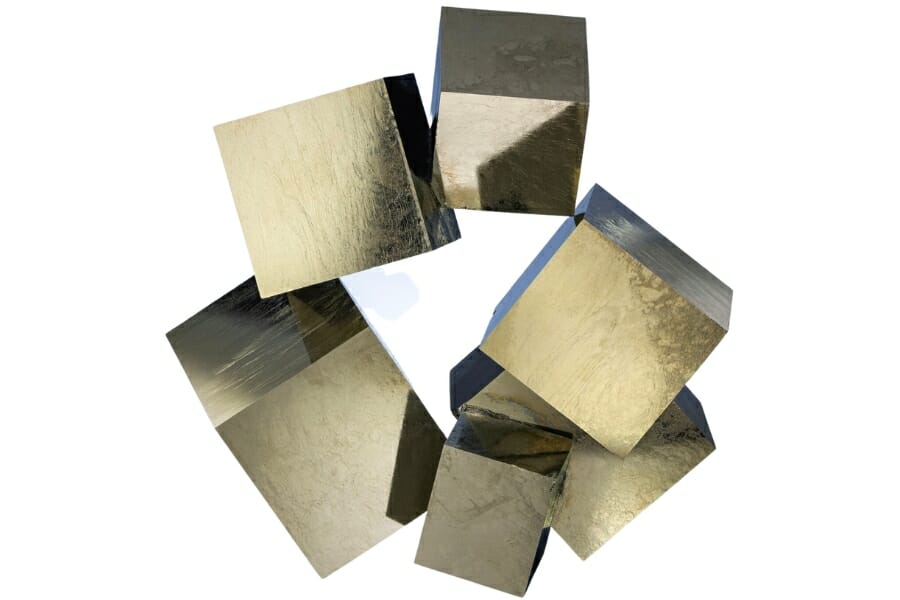Ohio is a treasure trove that often goes unnoticed! From colorful crystals to fascinating minerals, our state’s natural wonders will amaze anyone, regardless of age or interest. You don’t have to be a geologist to appreciate the beauty found in our local landscapes.
Imagine finding a glimmering piece of flint in Flint Ridge, or discovering the unique finds near Cincinnati. In Nelson-Kennedy Ledges State Park, you can stumble upon gorgeous quartz crystals. Even Lake Erie’s shoreline is sprinkled with fascinating rocks that tell stories of millions of years past!
Indeed, it’s worth it to see the different types of rocks found in Ohio. It’s a wonderful way to connect with nature and learn about the Earth’s history, right here in our beautiful state. If you can’t explore our place yet, don’t worry because, in this article, you’ll get to know all about these natural treasures and see them for yourself!
A List of The Common Rocks, Stones, and Minerals Found in Ohio
If you’re game to explore our state to uncover our plethora of natural wonders, make sure you check out our helpful guides to finding different rocks, minerals, gems, and crystals in Ohio:
Ohio Gem
Before we discuss the most common finds here, let’s first get to know Ohio’s flagship treasure.
| Ohio State Gem | Flint |
It’s also important to study and be familiar with our state’s local collecting guidelines. To read it, visit the official website of the Ohio Department of Natural Resources (ODNR), which regulates rockhounding activities here.
Always Confirm Access and Collection Rules!
Before heading out to any of the locations on our list you need to confirm access requirements and collection rules for both public and private locations directly with the location. We haven’t personally verified every location and the access requirements and collection rules often change without notice.
Many of the locations we mention will not allow collecting but are still great places for those who love to find beautiful rocks and minerals in the wild without keeping them. We also can’t guarantee you will find anything in these locations since they are constantly changing.
Always get updated information directly from the source ahead of time to ensure responsible rockhounding. If you want even more current options it’s always a good idea to contact local rock and mineral clubs and groups
Chert
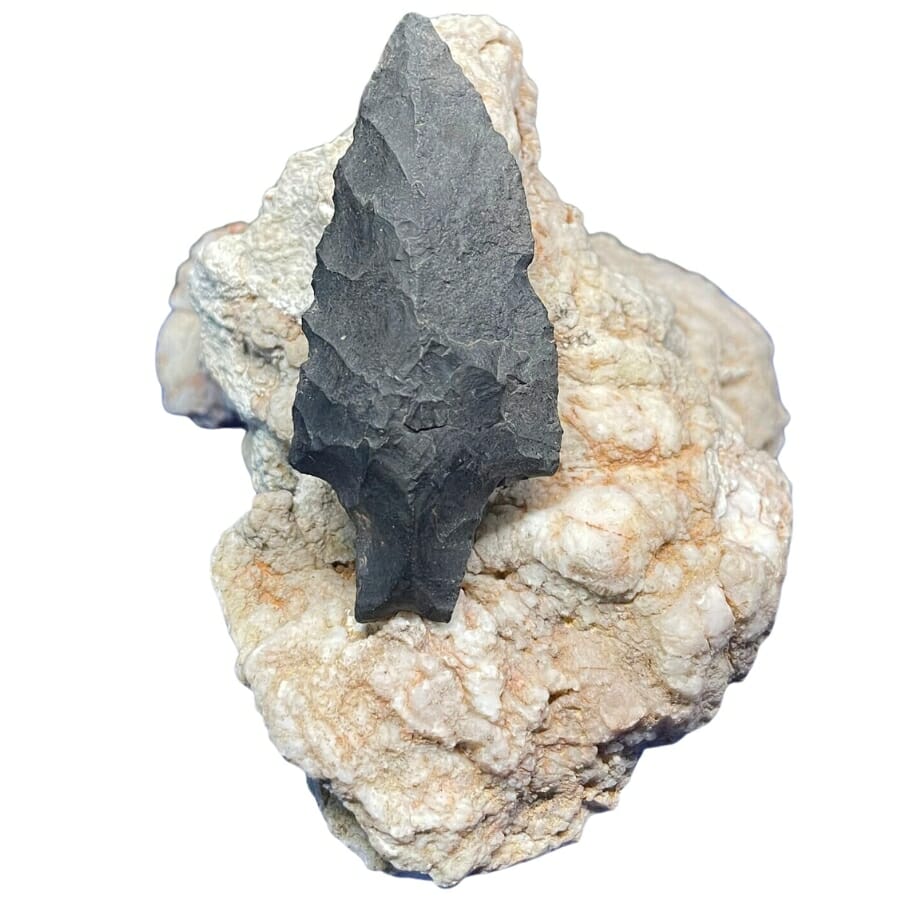
Chert is an exciting rock that you might have seen but didn’t know its name! It’s made of tiny crystals that form in limestones and chalks. Tiny sea creatures called plankton settled on the ocean floor over millions of years. As they dissolve, they leave behind silica that hardens into layers and eventually forms chert.
Geologists value chert because it helps them learn about ancient oceans and life on Earth long ago. And it’s not just for scientists! Carvers and artists appreciate its beauty in making sculptures and jewelry.
A special type of chert found here in our state is called flint, which we’ll discuss in more detail below.
Where you can find Chert in Ohio
You can explore the following locations to find chert:
- Flint Ridge State Memorial in Licking County
- Area gravels and exposures of Muskingum County
Gypsum
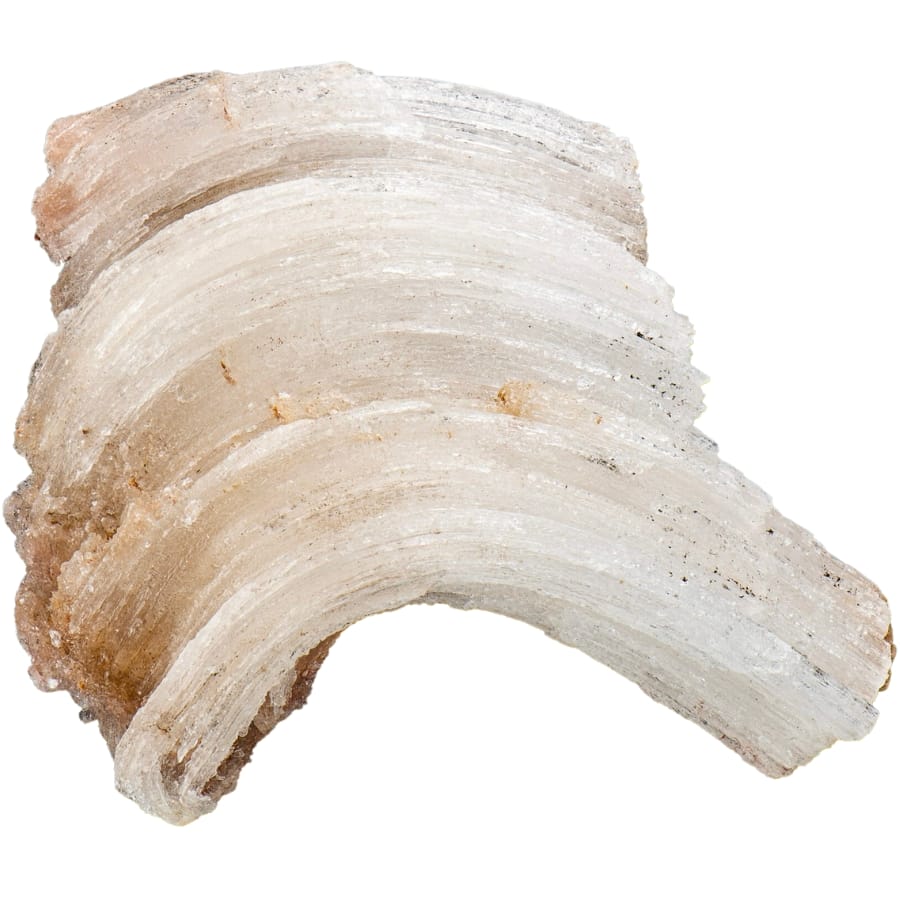
Gypsum is a rock that’s more amazing than you might first think. It’s made from calcium, sulfur, oxygen, and water that form in some pretty exciting ways. Often found in places where ancient seas once were, it forms when those salty waters evaporate, leaving behind a soft, white, or transparent mineral.
Gypsum has played a starring role in Ohio’s history. Our state was once covered by ancient oceans, and the specimens left behind tell a story of those watery times, long ago.
People value gypsum for all kinds of reasons. Farmers use it to improve soil, making crops grow better. Artists love carving it into works of art. Even doctors have found uses for it, like making casts for broken bones.
Where you can find Gypsum in Ohio
You can find gypsum when you explore the area quarries in Ellsworth, Mahoning County.
Dolomite
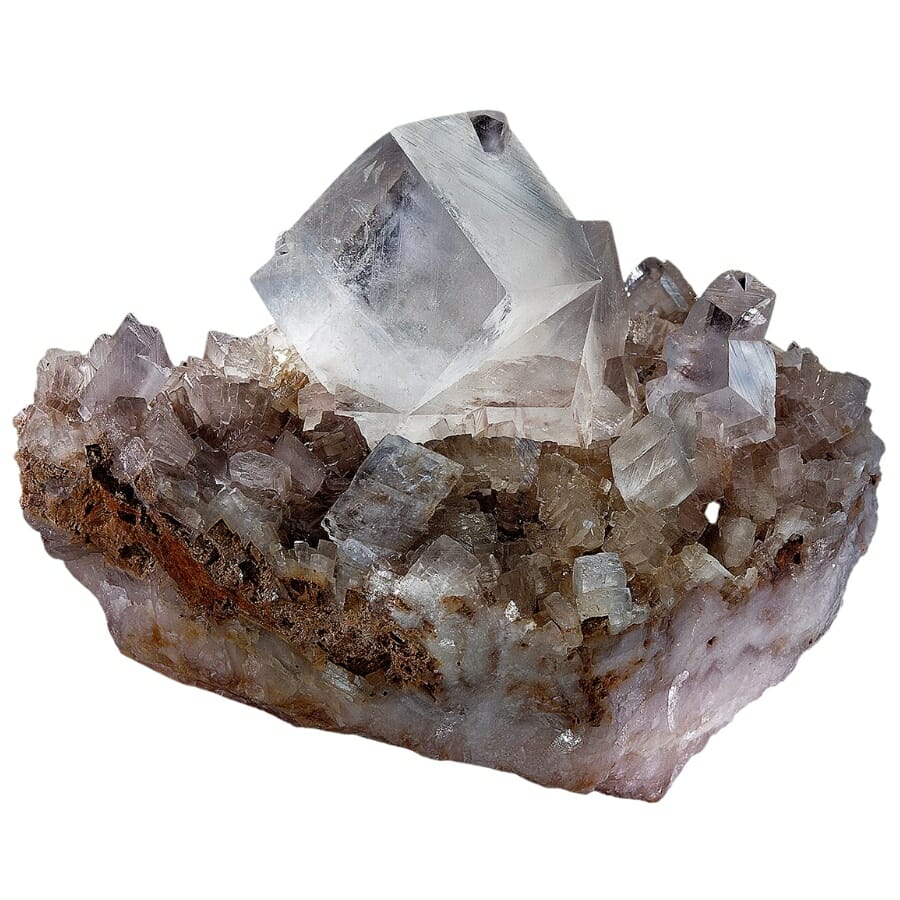
Dolomite is kind of like a cousin to limestone, made mostly of calcium and magnesium carbonate. Its amazing formation starts underwater, where tiny sea creatures leave behind their shells and skeletons. As layers build up over millions of years and mix with magnesium, dolomite is born.
What’s really cool about this rock is the way it fizzles with a weak acid like vinegar, but only if you scratch it first. Limestone will fizz without a scratch, so that’s one way to tell them apart.
Dolomite’s value is understated! Builders use it for construction, as it’s hard and weather-resistant. Farmers like it because it can help sweeten the soil, making it better for crops. Even scientists appreciate dolomite, as it helps them understand what the Earth was like millions of years ago.
The type of dolomite you’ll find in our state is in the form of rocks or even beautiful pink crystals called “dolomite spar.” These crystals can sometimes be seen sparkling in the sunshine.
Where you can find Dolomite in Ohio
To find dolomite, you can visit the Clay Center Quarry and Genoa area quarries which are both located in Ottawa County.
Catlinite
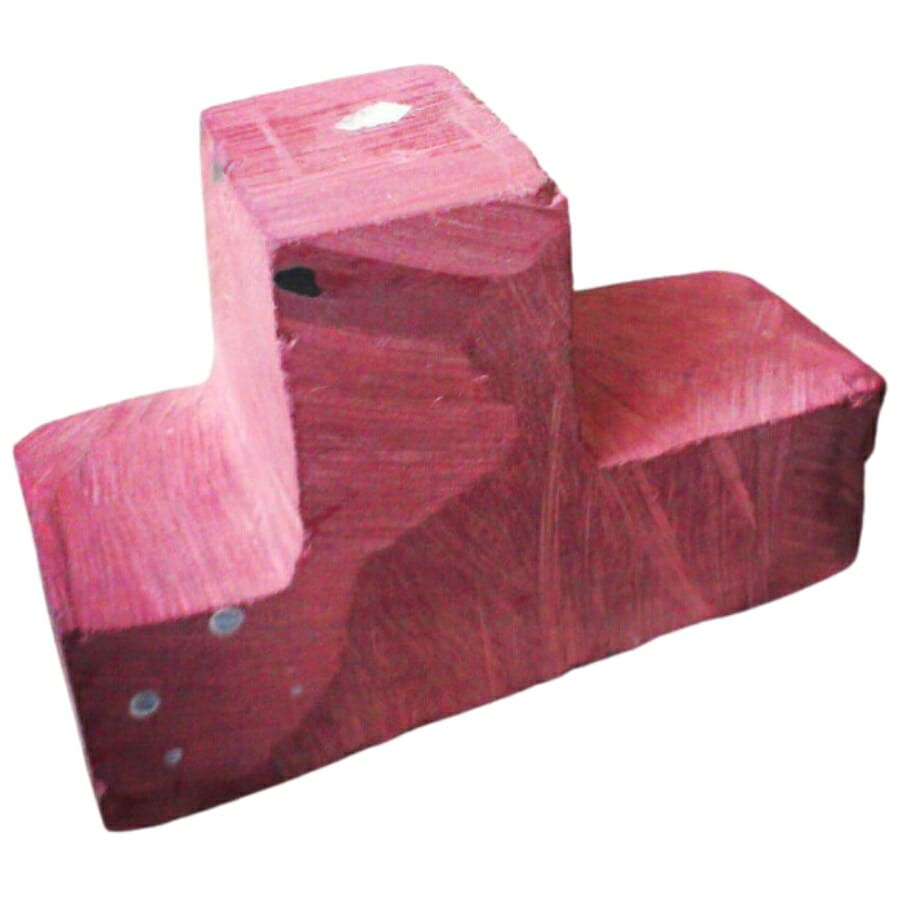
Catlinite, also known as pipestone, is a super interesting type of soft red claystone. It forms over millions of years as layers of mud, clay, and other materials get pressed together.
Sometimes, catlinite is red or reddish-brown, and that’s because of the iron in the clay. Isn’t it cool how something as simple as mud can turn into rock?
Catlinite got its name “pipestone” because Native Americans used it to carve peace pipes. It’s soft enough to shape but hard enough to last, making it perfect for carving. These pipes were, and still are, used in ceremonies, symbolizing peace and friendship.
Where you can find Catlinite in Ohio
You can find catlinite in the area quarries of Portsmouth in Scioto County.
Witherite
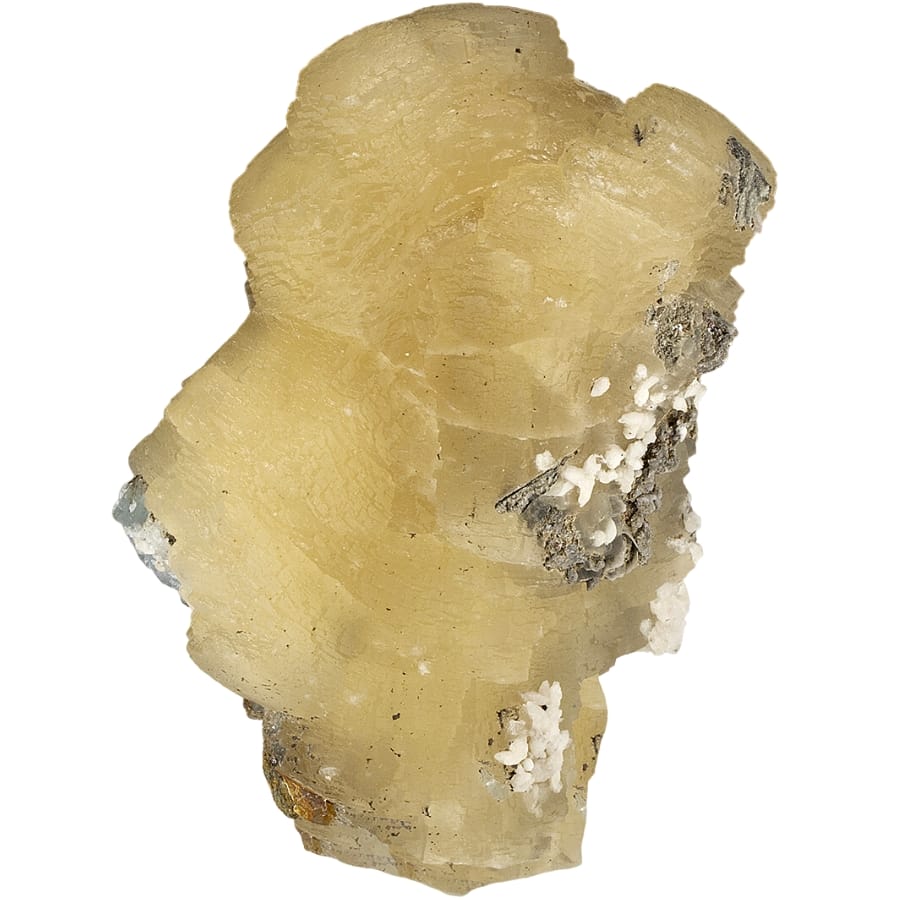
Witherite is made of barium carbonate and often forms unusual shapes, like sharp, pointy crystals. These crystals can be so dazzling that they seem to dance in the light!
This natural wonder usually grows in places with lots of barium-rich minerals, often near lead and zinc ores. Over time, as these minerals interact with water, Witherite begins to crystallize. Its formation is like a slow, natural piece of art taking shape underground.
Collectors love witherite’s unique crystal shapes, making it a prized piece in a mineral collection. Scientists and researchers appreciate it, too, because studying it can reveal clues about the underground conditions where it formed.
Where you can find Witherite in Ohio
To find witherite in our state, you can explore the area quarries and outcrops of Sandusky South in Erie County.
The Gemstones Found In Ohio
Aside from interesting rocks and minerals, the gemstones found in Ohio are also bountiful! If you’re planning on looking for them, here are some helpful guides that you can use in your search:
Flint
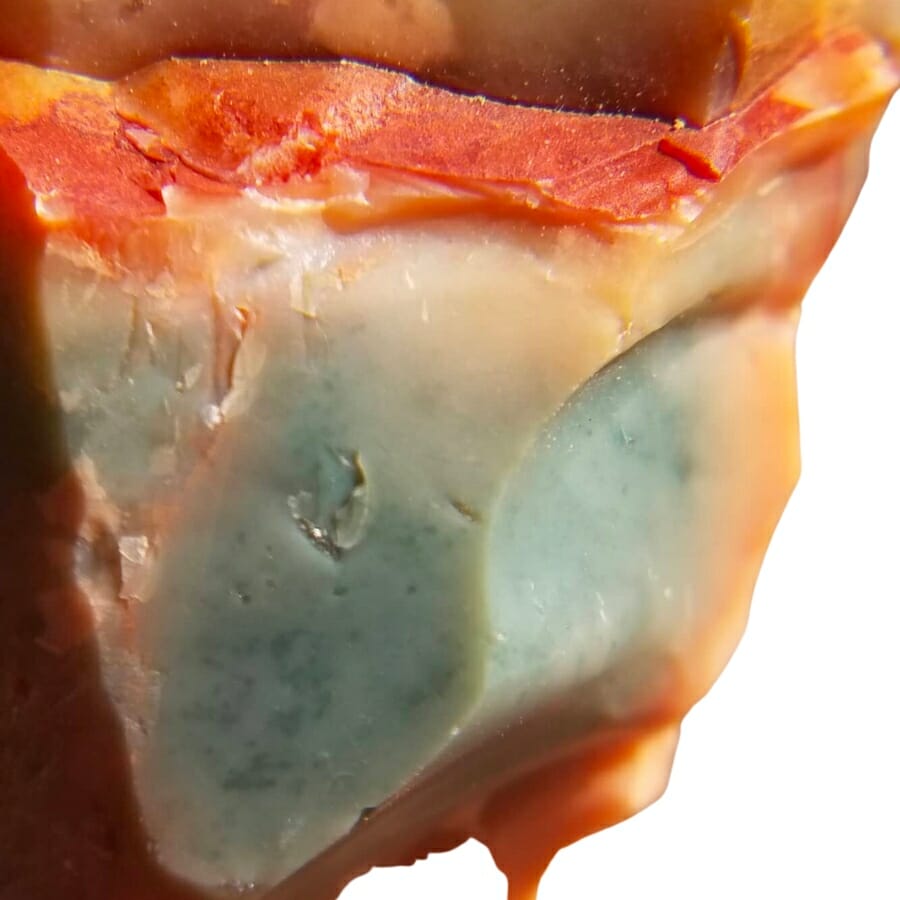
Flint is not just any ordinary rock— it’s a type of gem that has both beauty and purpose! Often found here in Ohio, it’s a special form of microcrystalline quartz, with crystals so tiny that you need a microscope to see them.
Picture layers of ancient shells and sea creatures on the ocean floor. As they slowly dissolve, they leave behind silica. This silica gets squished and heated over millions of years, and voila, flint is created!
This gem can be found in different colors like black, brown, gray, or even a reddish hue. These colors depend on the minerals mixed in with the silica. In our state, you might even find some with cool patterns or stripes.
Flint is valued for many reasons. Native Americans used it to make arrowheads, knives, and scrapers. It’s so hard and sharp that it can easily cut through things! Today, collectors love flint for its natural beauty and historical significance. In fact, flint is Ohio’s official state gemstone!
Where you can find Flint in Ohio
Explore the following areas in our state to uncover flint:
- Area ridges and knobs in Coshocton County
- Along high ridges of Benton Township in Ottawa County
- Flint Ridge State Memorial in Licking County
Agate
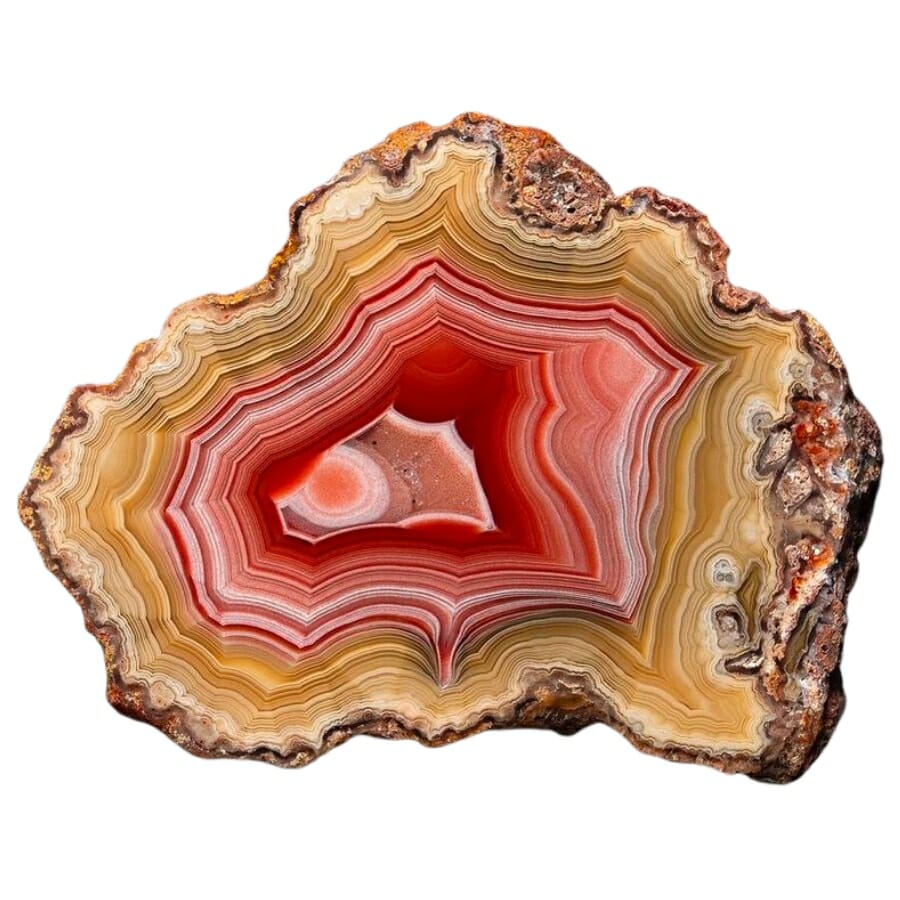
Agate is like a party inside a rock! This dazzling gem is found in different parts of Ohio, and it’s known for its bright, swirling colors and patterns. Imagine cutting open a plain-looking rock and finding a rainbow inside. That’s the surprise of agate!
But how does it form? It starts with a hollow space in a rock, often a volcanic lava bubble. Over time, layers of silica from groundwater fill in that space, creating rings of color. It’s like adding layers of paint to a canvas, but it happens naturally over millions of years!
The value of agate comes, not just from its beauty, but from its many uses. Jewelry makers love it for its beauty, turning it into necklaces, rings, and more. Collectors appreciate its unique designs, knowing that no two specimens are exactly the same. Even scientists find agate interesting, studying it to learn about Earth’s past.
Where you can find Agate in Ohio
Agate can be found in the gravels and exposures of Muskingum County and Flint Ridge State Memorial in Licking County.
Diamond
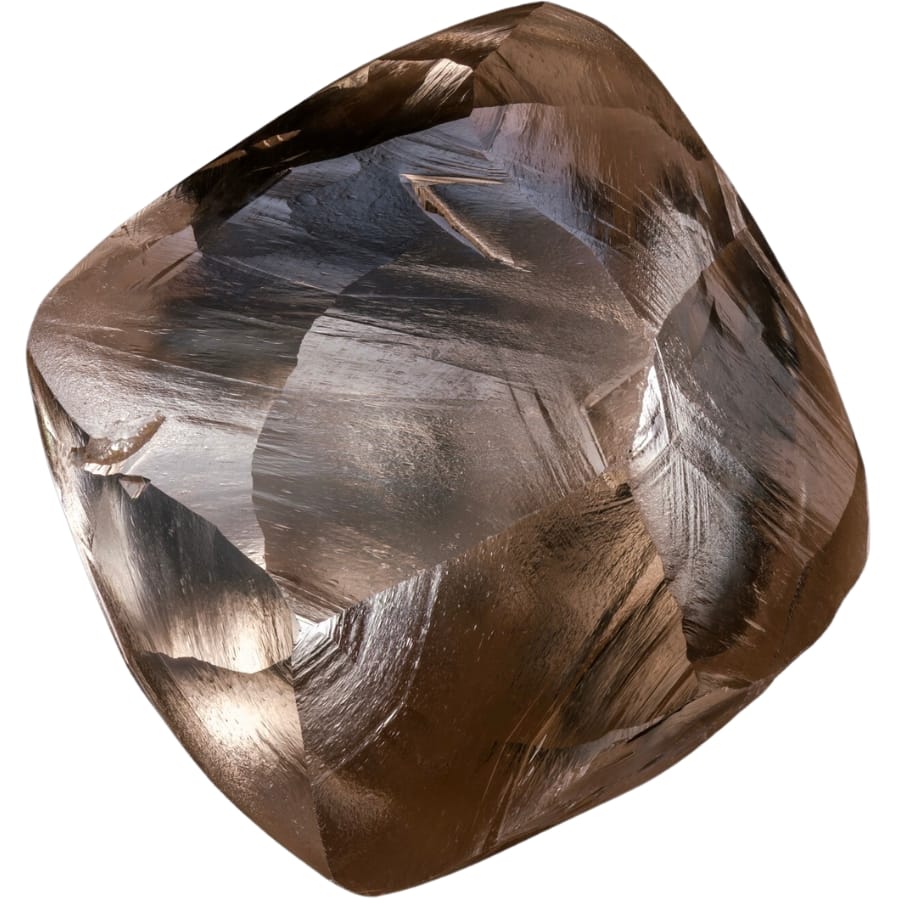
Diamonds are more than just sparkly gems— they’re a geological wonder! They’re made of pure carbon, the same stuff you find in your pencil lead. But instead of being soft, they become the hardest natural substance on Earth.
Imagine carbon atoms squeezed and heated deep underground, about 100 miles beneath the surface. Over billions of years, they crystallize into dazzling diamonds. Sometimes, volcanoes blast them up closer to where we can find them.
Diamonds aren’t all the same, either. They come in different colors like blue, yellow, and even pink. These colors happen because of tiny bits of other elements trapped inside, or because of little tweaks in the diamond’s structure.
How much diamonds are worth is based not only on their beauty and rarity. While they’re used in jewelry and are a symbol of love and commitment, they’re not just for looking pretty! Because they’re so hard, they’re also used in cutting tools and scientific equipment.
Where you can find Diamond in Ohio
You can explore the east bank of Little Miami River in Clermont County to find rare diamonds in our state.
Barite
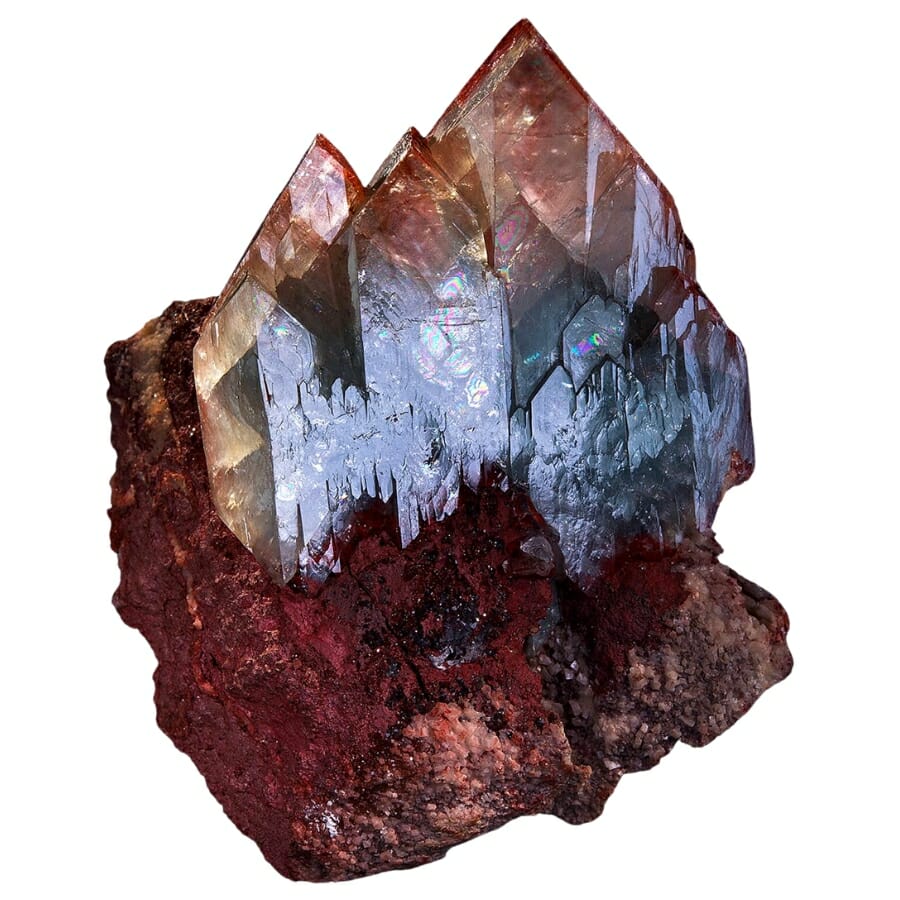
Barite might not be as well-known as some gems, but it’s an amazing one that has its own special sparkle! This unique find is made up of barium sulfate and can be found in different parts of the world, including Ohio.
What’s really neat about barite is how it forms. Often, it grows in hot springs or in the cracks of other rocks. Over time, as the barium-rich waters flow into these spaces and evaporate, barite starts to crystallize. You can find it in all kinds of shapes, like flat blades or even rosettes that look like a flower!
Barite can come in different colors like white, yellow, blue, or even colorless. This is why collectors love it. But it isn’t just pretty to look at; it’s also useful! It’s used in oil drilling to make the drilling mud heavy and even in medical tests to help doctors see inside the body.
Where you can find Barite in Ohio
We recommend visiting and exploring the Pugh Quarry in Wood County to find samples of barite.
Marcasite
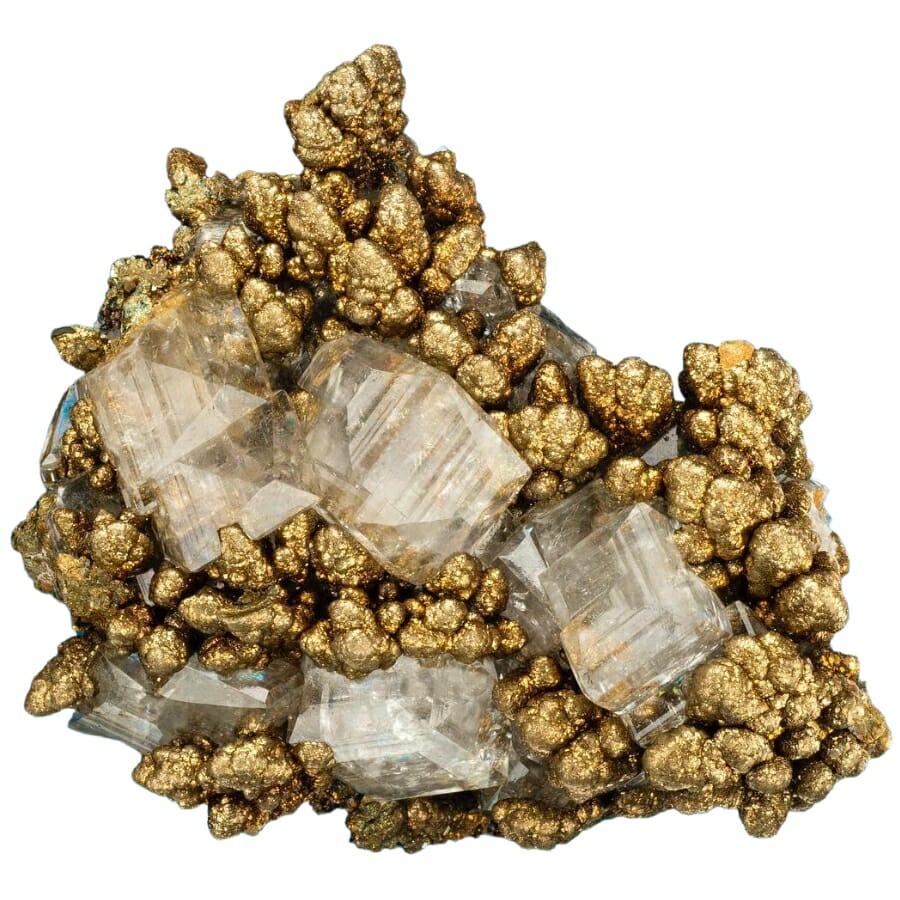
Marcasite is sure to dazzle with its metallic sparkle that will catch your eye! It’s like a twin to pyrite (which we will discuss more about below). Both are made of iron and sulfur, but marcasite has a different crystal structure.
This gem often grows in places where there’s a mix of iron, sulfur, and organic matter, like in muddy places underground or near hot springs. Over time, the right conditions create sparkly marcasite crystals, with their shiny, silver-white color.
Marcasite is valued for its beauty, and jewelers use it to create elegant and affordable pieces of jewelry. It’s also loved by collectors who appreciate its unique crystal shapes.
Where you can find Marcasite in Ohio
You can explore the following sites to find marcasite:
- Medusa Quarries in Lucas County
- Clay Center Quarry in Ottawa County
- Genoa area quarries in Ottawa County
Celestite
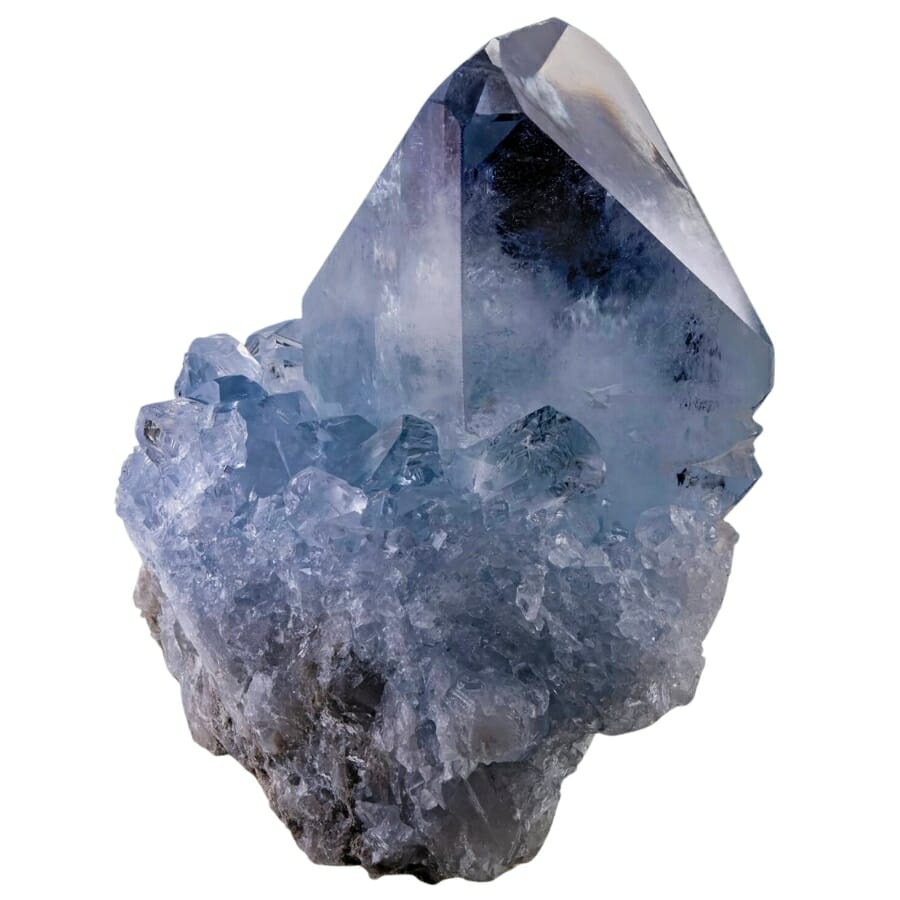
Celestite, with its heavenly blue color, is like a piece of the sky trapped in a gem! The name “celestite” even comes from the Latin word for “heavenly,” and it sure looks like it! It’s an extraordinary gem made of strontium sulfate and it often grows in sedimentary rocks, especially limestone.
Collectors love celestite’s stunning color and crystal shapes. Some even believe that it has calming or spiritual properties. Scientists find celestite interesting too, studying it to understand the history of the Earth.
In our state, celestite can be found in different places, and sometimes it comes with surprises. You might find samples that are colorless or white, but the soft blue ones are the most famous.
Where you can find Celestite in Ohio
Celestite can be uncovered in the following specific areas of our state:
- Genoa area quarries in Ottawa County
- Put-in-Bay on South Bass Island in Lake Erie in Ottawa County
- Woodville area quarries in Sandusky County
The Crystals Found In Ohio
If you’re looking for more captivating finds in our state, you can also try uncovering crystals because we have TONS of these wonders here. Luckily, we’ve created a comprehensive guide to locating the crystals found in Ohio:
Calcite
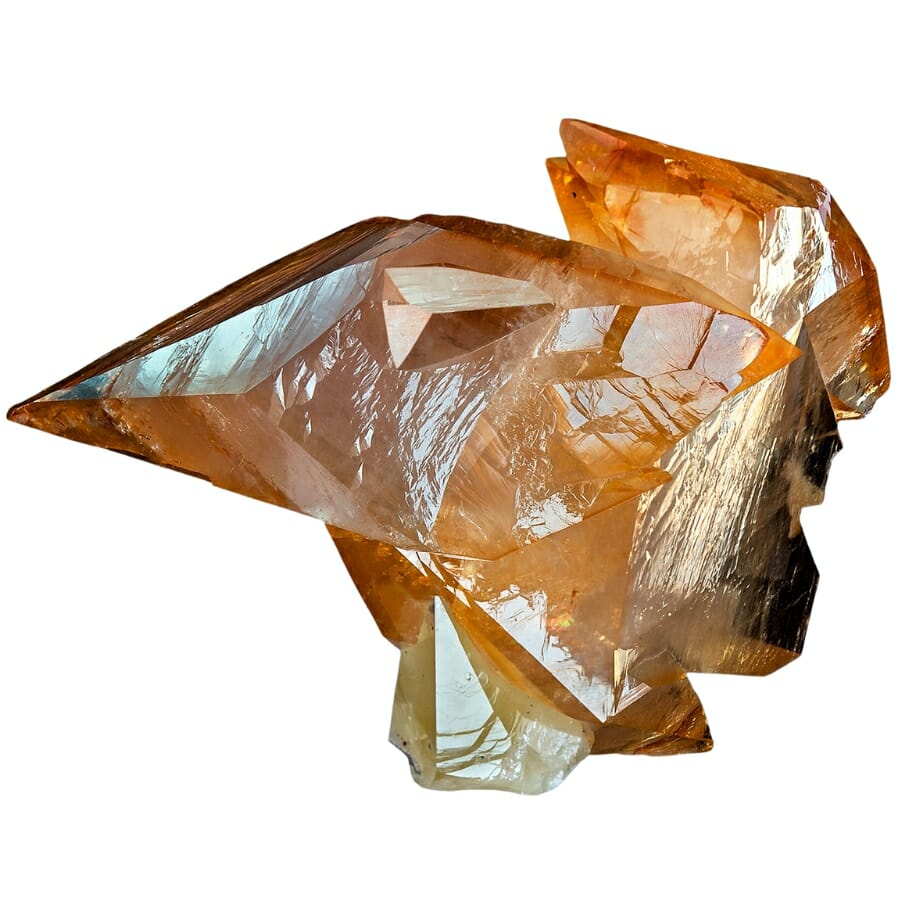
You can find calcite all over the world, including right here in our state. It’s made of calcium carbonate, the same stuff that’s in eggshells and seashells. Most interesting of all is that it can grow in all sorts of places like caves, hot springs, or even inside other rocks.
These crystals come in all kinds of shapes and colors. It might be clear, white, yellow, or even shades of green or red! In Ohio, you can find different types of calcite, each telling a special story about the place where it formed.
Now, when it comes to calcite’s value, there are lots of reasons why people love them. Aside from its forms and colors that make it lovable for collectors, calcite can also do things like split light into two rays or even glow under UV light. It’s used in science, industry, and even art.
Where you can find Calcite in Ohio
To find calcite here, you can pay a visit to the following places:
- Road, railroad, stream cuts, area gravel pits, and quarries in Conneaut in Ashtabula County
- Pugh Quarry in Wood County
- Genoa area quarries in Ottawa County
Pyrite
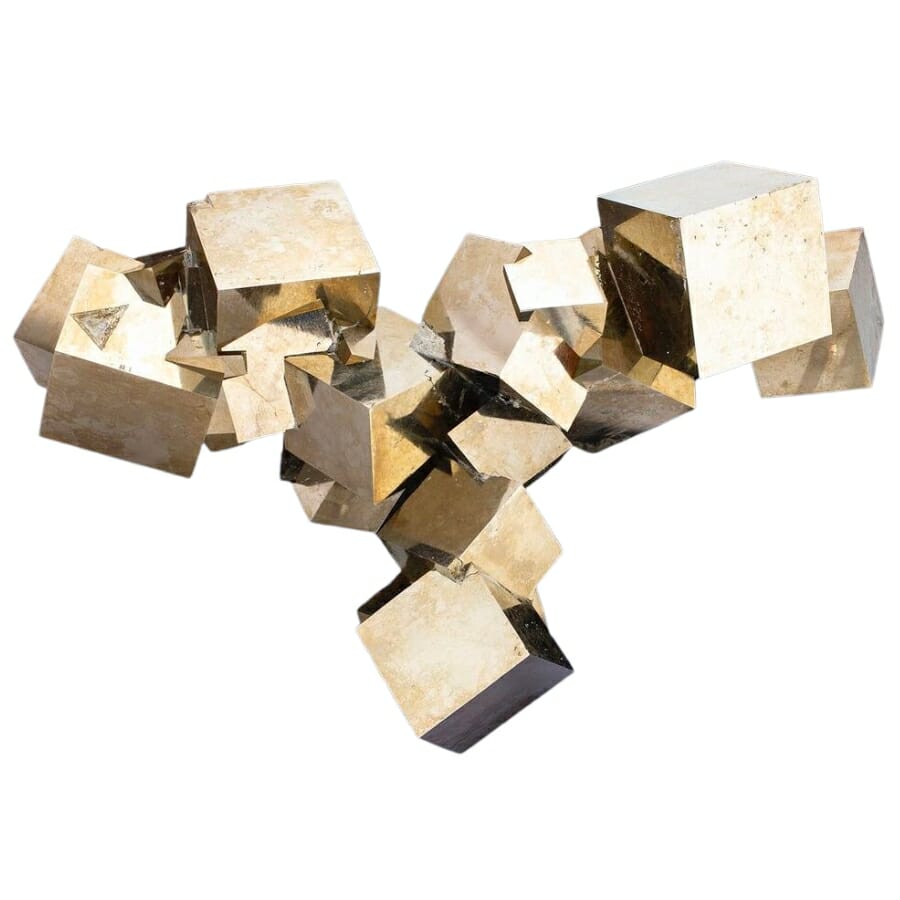
Pyrite is like the trickster of the crystal world! It’s often called “fool’s gold” because of its shiny, gold-like appearance. But even though it’s not real gold, it’s still a treasure, especially in our state where they can be found in different unique shapes. Some might look like perfect cubes, while others might have more complex forms.
It’s made of iron and sulfur and usually forms in rocks near hot, bubbly water, like around volcanoes or hot springs. When these two elements combine under the right conditions, they create the beautiful, golden crystals we know as pyrite.
Collectors value this crystal for its shiny appearance and fascinating shapes, but pyrite’s price and worth go beyond its looks. It’s also used in making things like batteries and even some medicines. Also, pyrite can create sparks if you strike it against metal, which used to help people start fires long ago.
Where you can find Pyrite in Ohio
Pyrite is pretty much widespread in Ohio, and you can find them in places like:
- Delaware countywide
- Franklin countywide
- Medusa Quarries in Lucas County
Fluorite
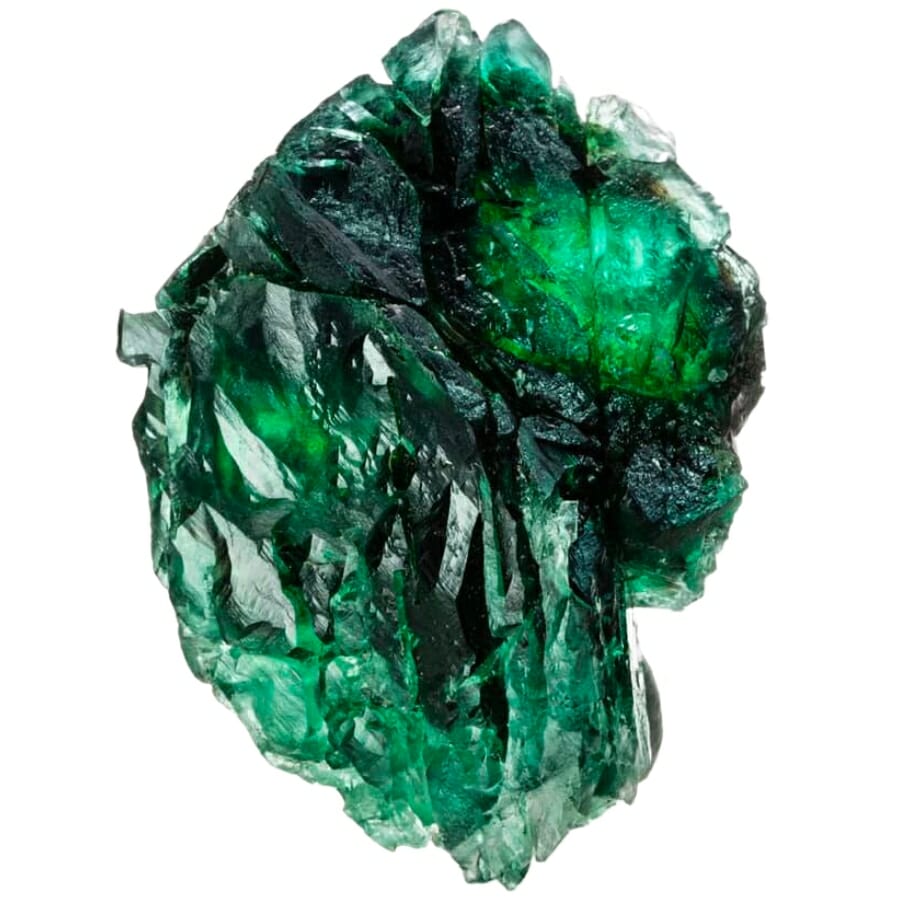
With its incredible range of colors, from purple and green to blue and yellow, fluorite is like a rainbow trapped inside a crystal! It usually grows in places where hot water flows through rocks, like around hot springs or deep underground. When calcium and fluorine get together, they form these stunning crystals.
Did you know that fluorite can actually glow under ultraviolet light? This ability is called fluorescence. This adds up to fluorite’s value. But people are not only drawn to its vibrant colors and crystal shapes but also to its versatility to be used in making things like steel. It’s even used to help telescopes work better.
If you’re planning on looking for fluorite in our state, just know that you can find different types of this crystal here, each with its unique colors and shapes.
Where you can find Fluorite in Ohio
We suggest visiting the following places if you’re eyeing to locate fluorite:
- Clay Center Quarry in Ottawa County
- Pugh Quarry in Wood County
- Rimer area mines in Putnam County
Amethyst
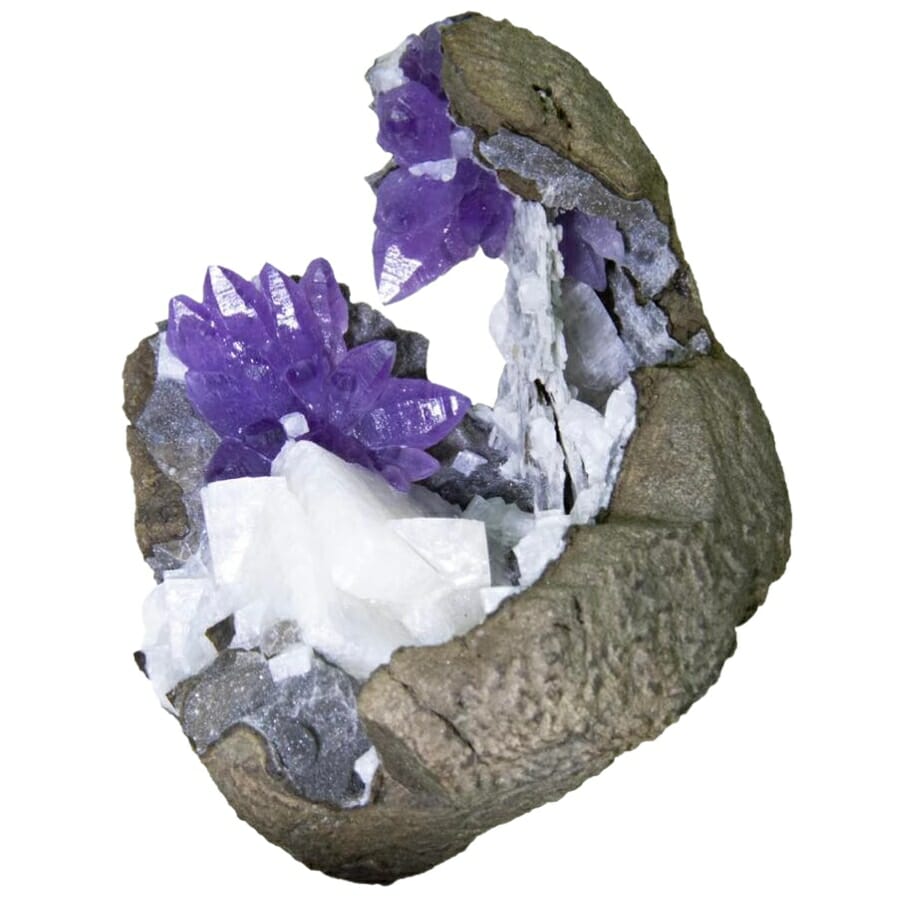
Amethyst is a dazzling crystal that’s actually a type of quartz, and its gorgeous violet hue makes it a standout. It grows in places where hot, mineral-rich water flows through cracks in rocks. Over time, the minerals build up and form crystals.
Here’s a fun fact: the color of amethyst can change! If you heat it up, it might turn yellow or even green. It’s like a crystal chameleon!
The beautiful color of amethyst makes it popular in jewelry, and some people believe it has calming and spiritual properties. Scientists and collectors love studying its crystal shapes and learning how it formed. So it’s no wonder why amethyst’s worth and value have been consistently high.
Where you can find Amethyst in Ohio
You can explore sites such as the following to uncover amethyst in our state:
- Area gravels and exposures of Muskingum County
- Flint Ridge State Memorial in Licking County
Hematite
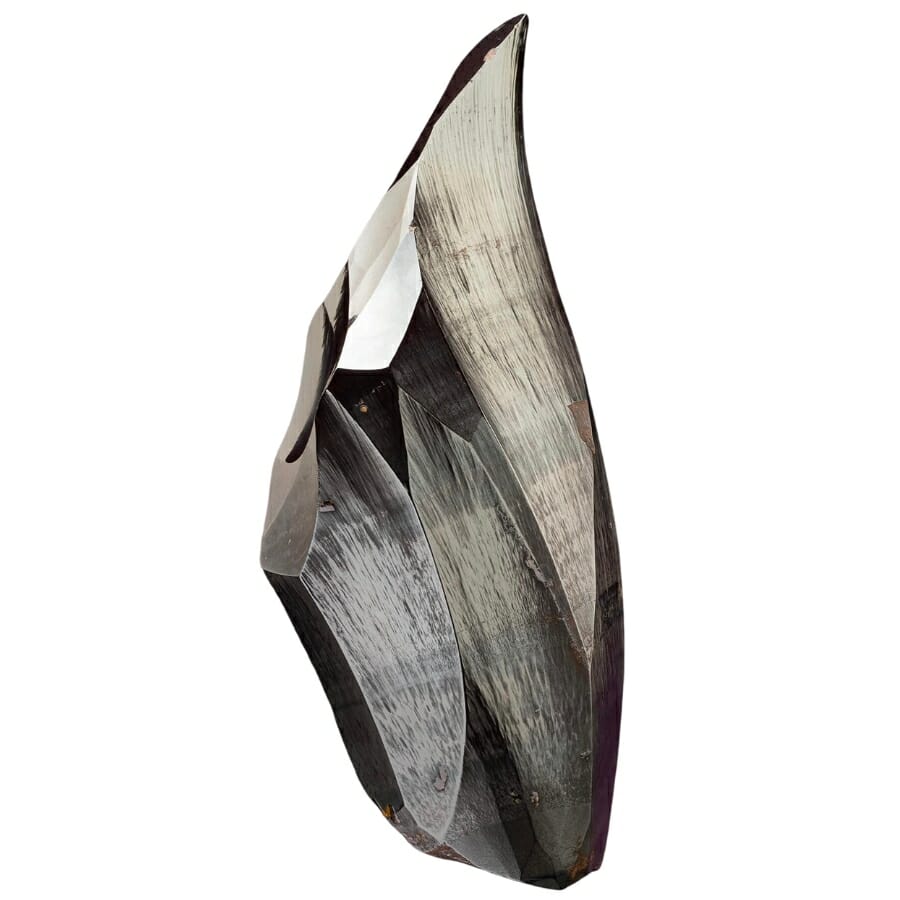
Hematite is often dark gray or black and has a metallic shine. It’s often created when hot water interacts with iron-rich rocks. This can happen near volcanoes, hot springs, or even in calm lakes. Over time, the iron and oxygen in the water combine to create this amazing crystal.
Hematite comes in different shapes: from shiny plates to reddish-brown earthy masses. And the unique thing about it is that it can be magnetic! Some of its types can attract metal, just like a magnet.
With all these characteristics, it’s not surprising why hematite is highly-valued. It’s used in making paint, jewelry, and even steel. Some also love its metallic appearance and use it in art and decorations. In fact, it’s been used since ancient times as a pigment. Imagine painting with a mineral from deep within the Earth!
Where you can find Hematite in Ohio
To find hematite, you can go over to Baker Creek in Highland County and to Zanesville area mines in Muskingum County.
The Most Valuable Rocks and Minerals in Ohio
Now that we’ve discussed the most common rocks, minerals, gems, and crystals in our state, let’s go to the few valuable finds that you should be aware of. These finds are not very common both in Ohio and in other states, which makes them all the more awesome to uncover.
Silver
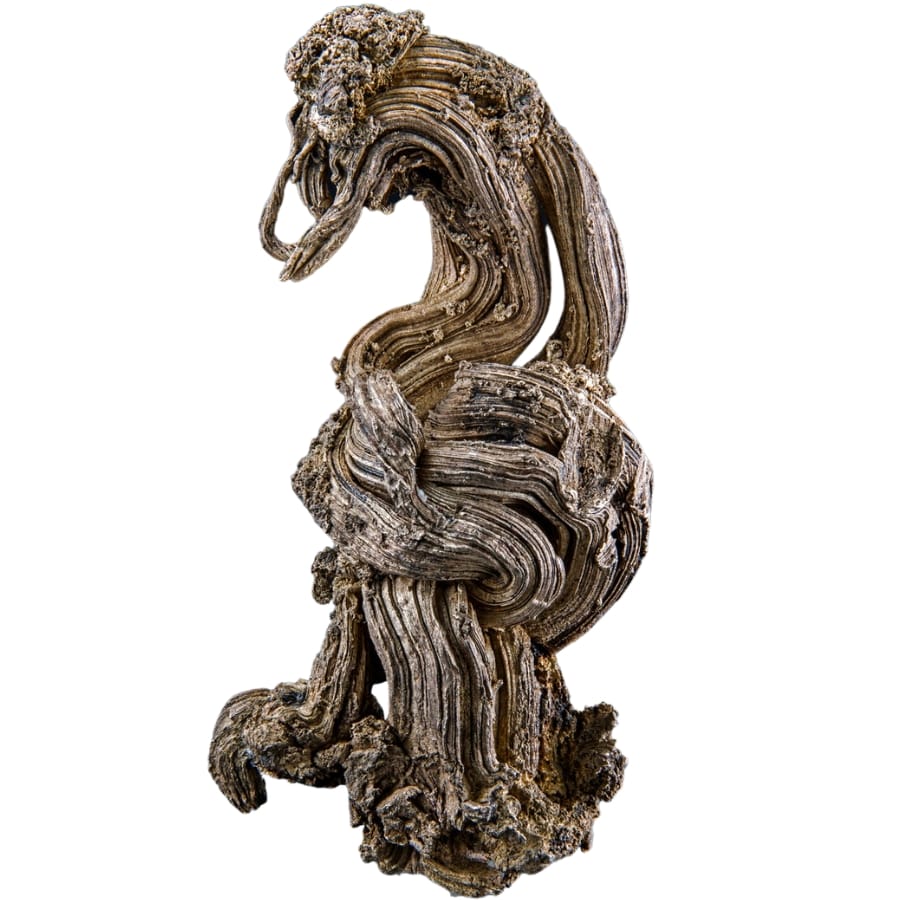
Silver shines bright with a gorgeous, silvery-white glow. It’s formation often starts deep inside the Earth near hot, molten rock. When this hot rock cools down, it can leave behind veins of pure silver or mix with other minerals to create ores. Sometimes, silver even forms near volcanoes or hot springs.
This mineral isn’t just pretty to look at— it’s super useful too! It’s an excellent conductor of electricity, that’s why you’ll find it in electronics and batteries. But that’s not all! It has been used to make jewelry, coins, and decorations for thousands of years. Its shine and ability to resist tarnishing make it perfect for these uses.
Most surprising of all, silver even has a role in medicine. Some medical tools have a coating of this mineral because it can kill germs.
Where you can find Silver in Ohio
You can find and observe silver in Clifton Gorge along the Little Miami River in Greene County.
Jasp-Agate
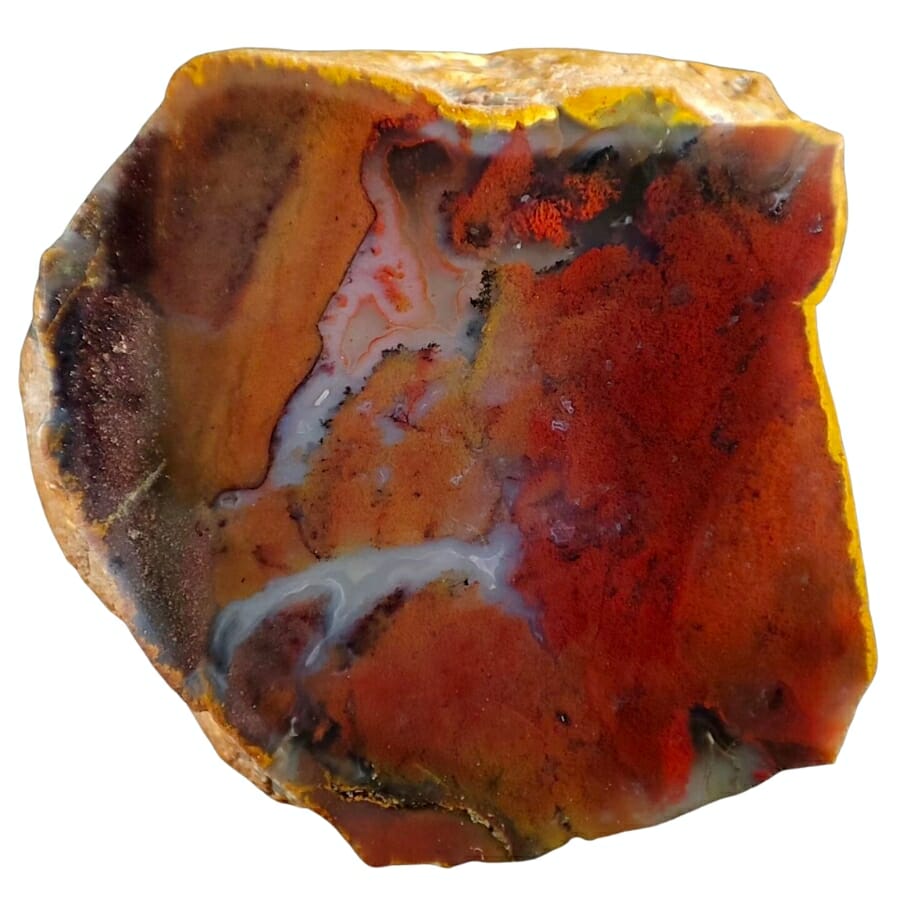
Jasp-agate is like a fantastic fusion of two rock stars: jasper and agate! This wonderful blend creates a colorful and patterned gemstone that’s fascinating to explore. Imagine a gem that has deep reds, browns, and greens combined with swirling bands. It’s like an artist’s palette, filled with colors and designs.
It starts with volcanic activity or shifting Earth that makes openings in rocks. Over time, silica-rich water fills these openings and deposits minerals layer by layer. Jasper builds up in some layers, while agate forms in others. The result is a mix of both in one stone!
What makes jasp-agate valuable? Its beauty, of course! People love to use it for jewelry, decorations, and even spiritual practices. Artists and collectors adore the unique look of each piece, and it’s often used to create stunning artwork.
Where you can find Jasp-Agate in Ohio
You can find jasp-agate in the area gravels and exposures of Muskingum County and in the Flint Ridge State Memorial in Licking County.
Pearl
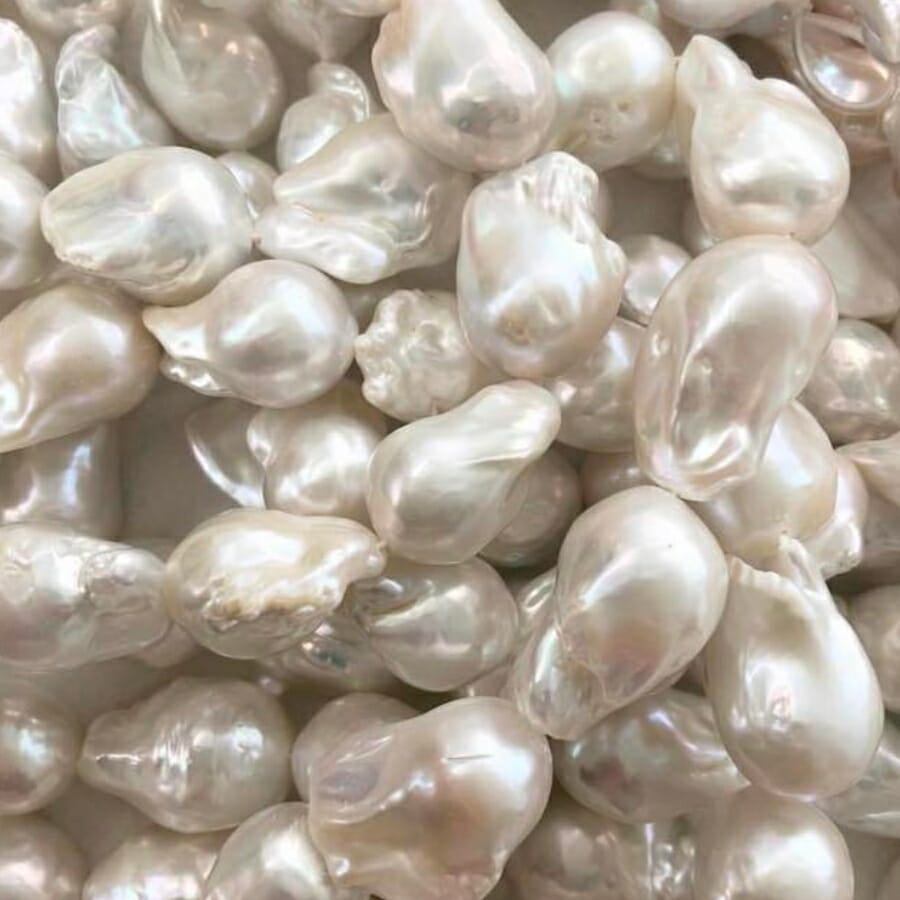
Pearls are like the hidden treasures of the sea! They might look simple, but the way they form is a dazzling story of nature’s creativity.
Unlike most gems that form in rocks, pearls are made inside living creatures like oysters, mussels, and clams. How cool is that? It all begins when a tiny particle, like a grain of sand, gets inside the shell. The creature inside the shell starts covering it with something called nacre, layer by layer. Over time, this creates a pearl.
Pearls come in different colors too: from classic white to black, pink, and even golden shades. Each color adds to the pearl’s charm. This is why people have loved them for thousands of years. Symbolizing purity and elegance, they can be found in necklaces, earrings, and other jewelry. This makes pearl’s value sore high.
Where you can find Pearl in Ohio
To find a pearl, you can explore Paint Creek all the way to the mouth of Scioto River in Ross County. You can also visit the Waynesville area and downstream in the Little Miami River in Warren County.
How to Identify The Rocks and Minerals You Find
Identifying rocks and minerals is no easy feat, but you don’t need to be a professional geologist to do it successfully. In this section, we’re sharing with you some of the most helpful tests that you do yourself to identify your finds:
Examine its color and luster
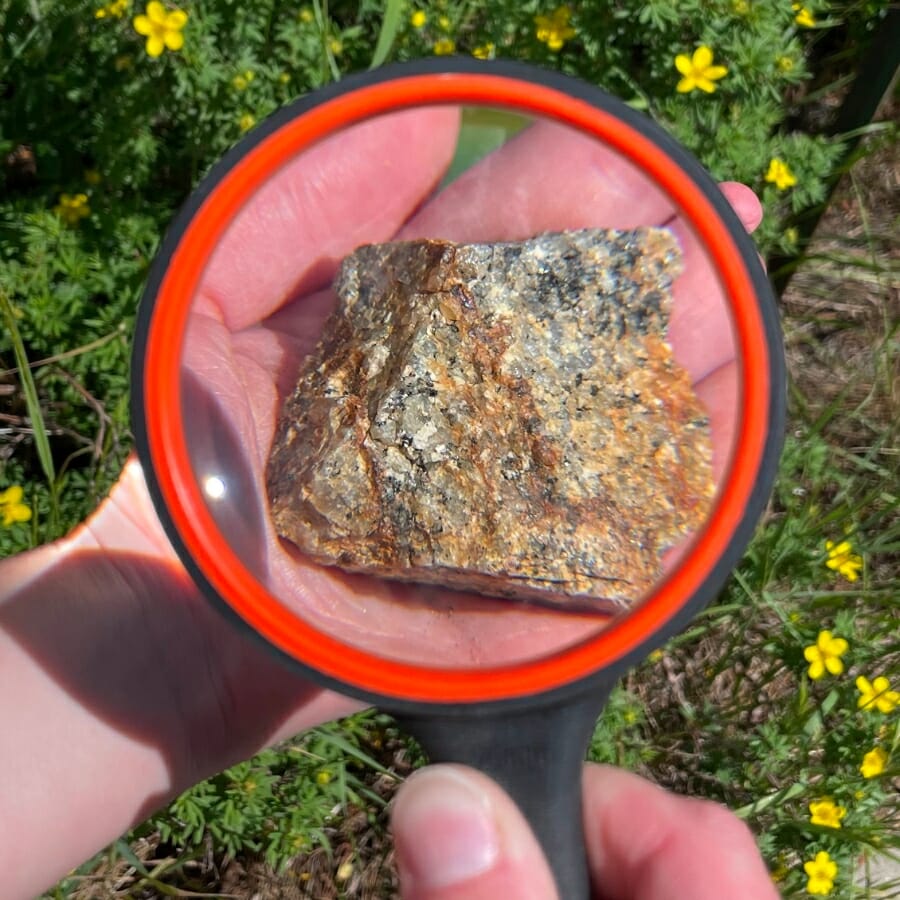
One of the simplest ways to identify a specimen is by its color. Different rocks and minerals have characteristic colors. For example, malachite is often green, while sulfur is bright yellow. But beware, color alone isn’t always reliable, as impurities can change a mineral’s color. It’s a good starting point, though.
You should also examine your find for luster, which is how a mineral reflects light. Does it sparkle like a diamond or have a greasy or dull appearance? Identifying its luster can narrow down your options.
Do a quick streak test
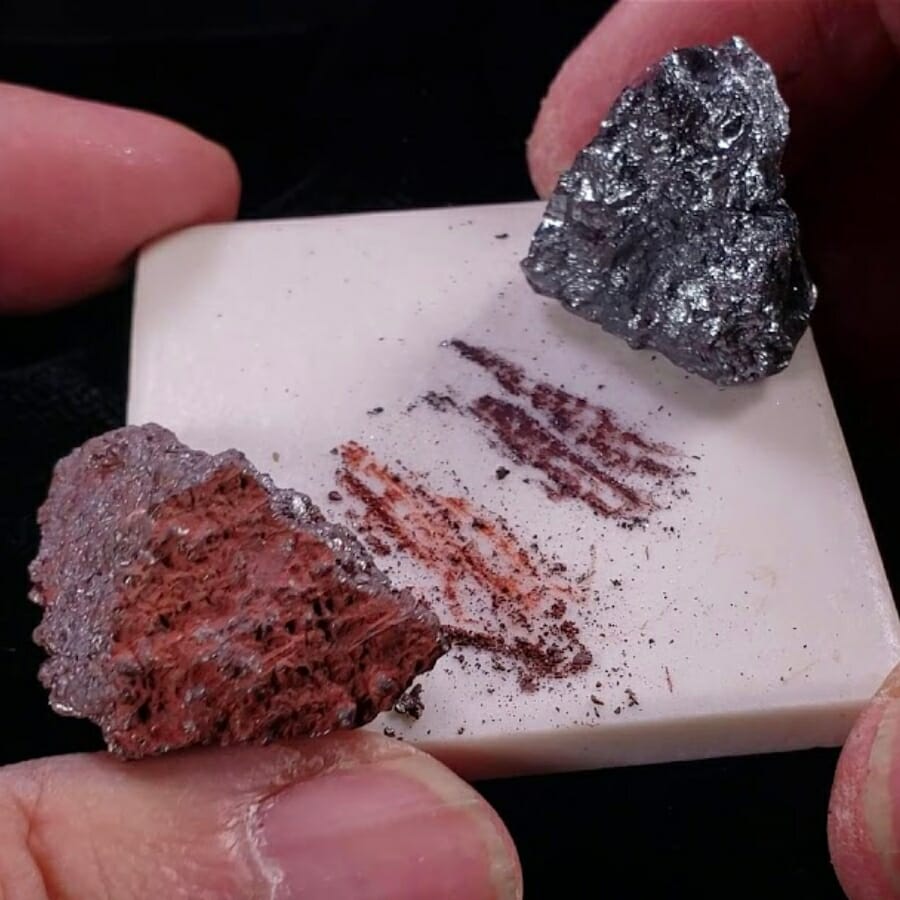
A streak test involves rubbing the specimen on a piece of unglazed porcelain called a streak plate. The color of the streak can be a clue to the mineral’s identity.
For example, hematite will leave a reddish-brown streak, while pyrite’s streak is greenish-black. It can be a fun and informative test!
Test its hardness
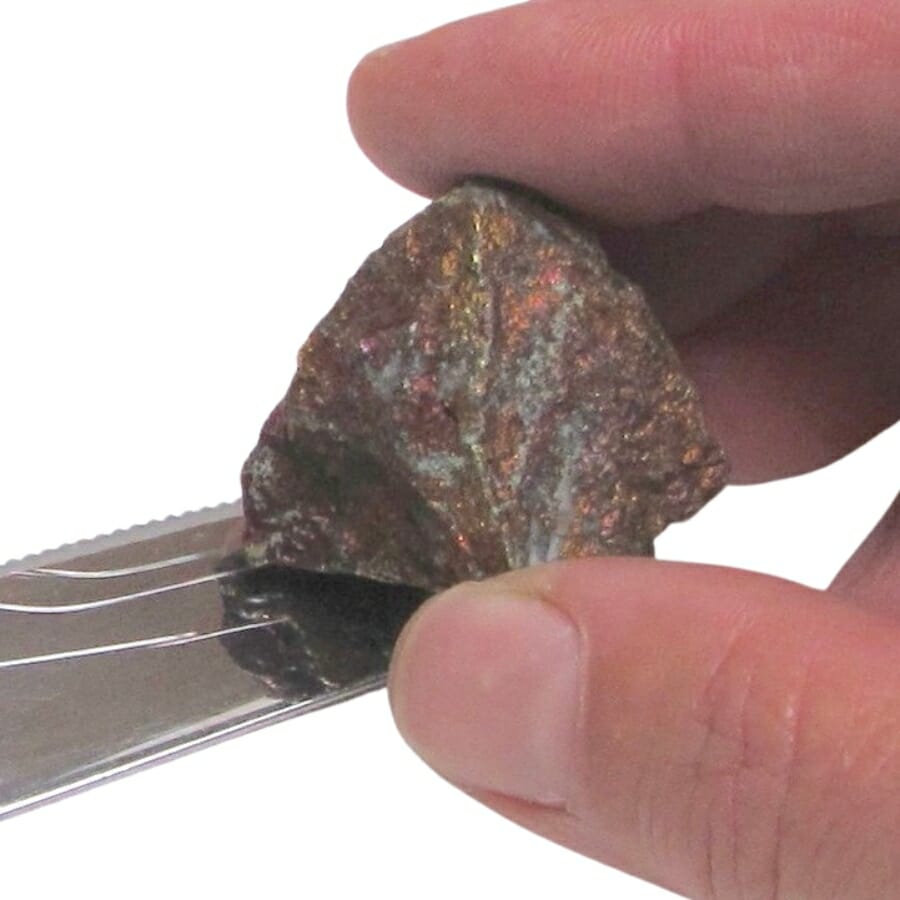
Rocks and minerals have different hardness levels. You can perform a hardness test using common objects like a fingernail, a penny, or a steel nail.
If the specimen scratches the object, it’s harder; if the object scratches the specimen, it’s softer. Comparing the hardness with a standard scale like Mohs’ scale can help you identify it.
Test it for magnetism and other properties
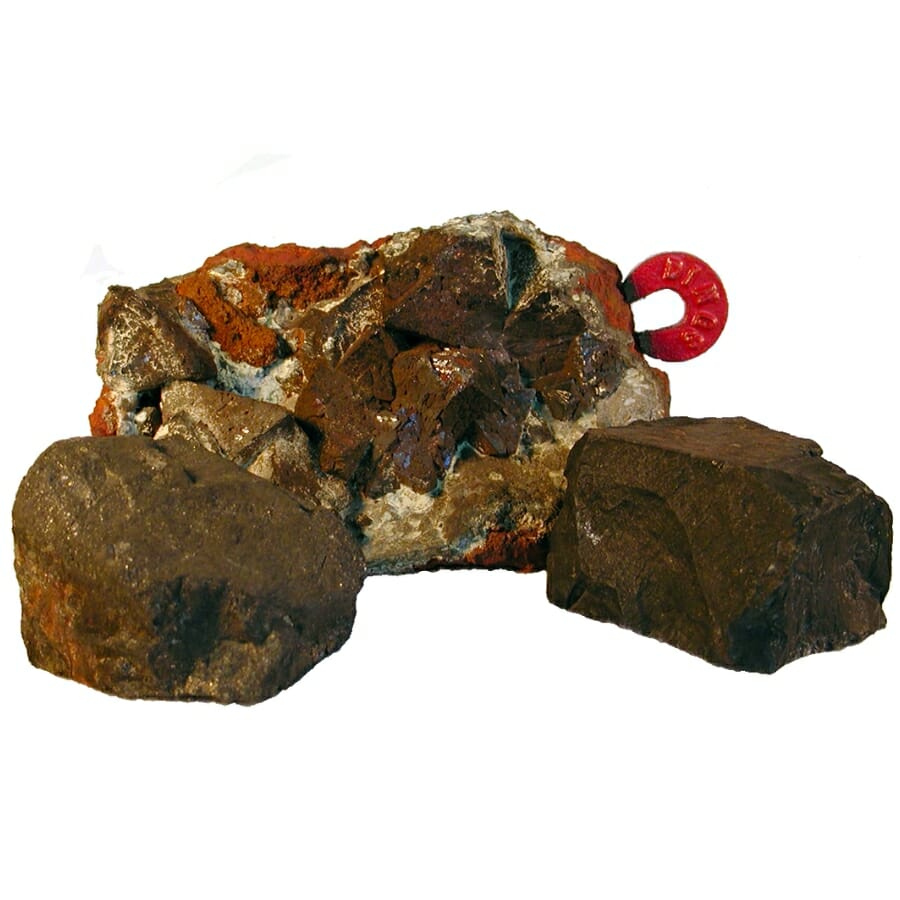
Some minerals have unique properties. Magnetite, for example, is attracted to magnets. Others might glow under UV light or have a specific smell. These special traits can be big clues to identification.
Use field guides or online apps
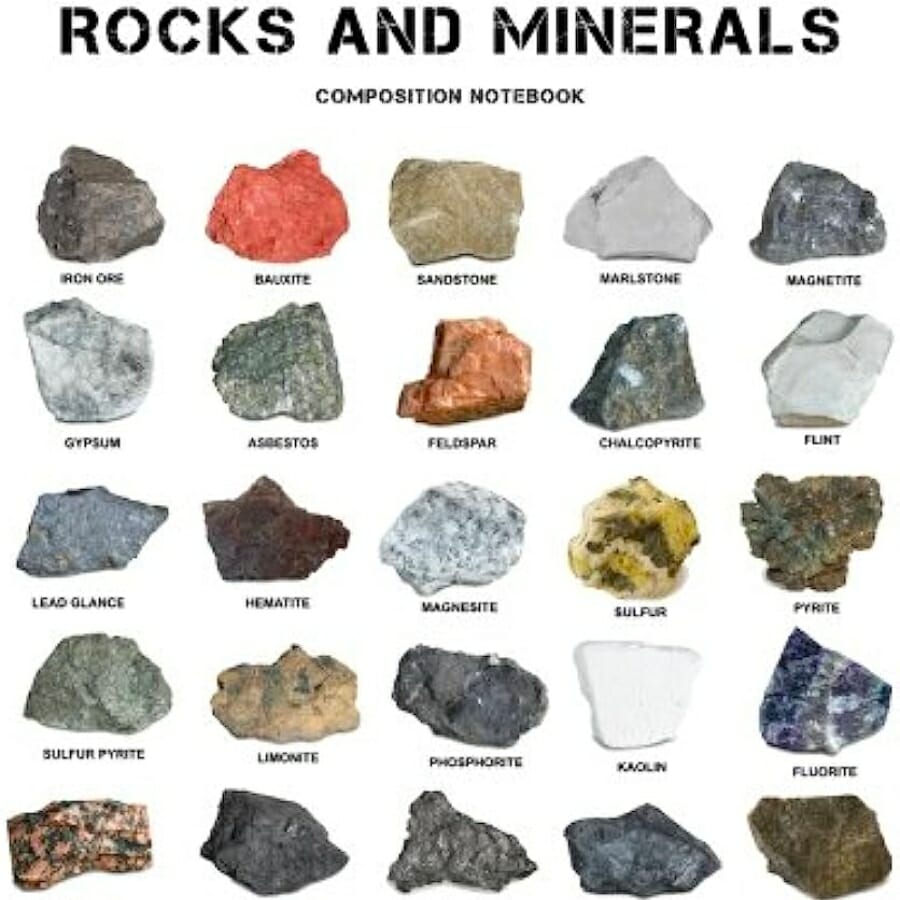
Many field guides and apps are available for non-experts. These guides are full of pictures and descriptions that can help you match your rock or mineral with known examples. It’s like having a geologist’s knowledge in your pocket!

